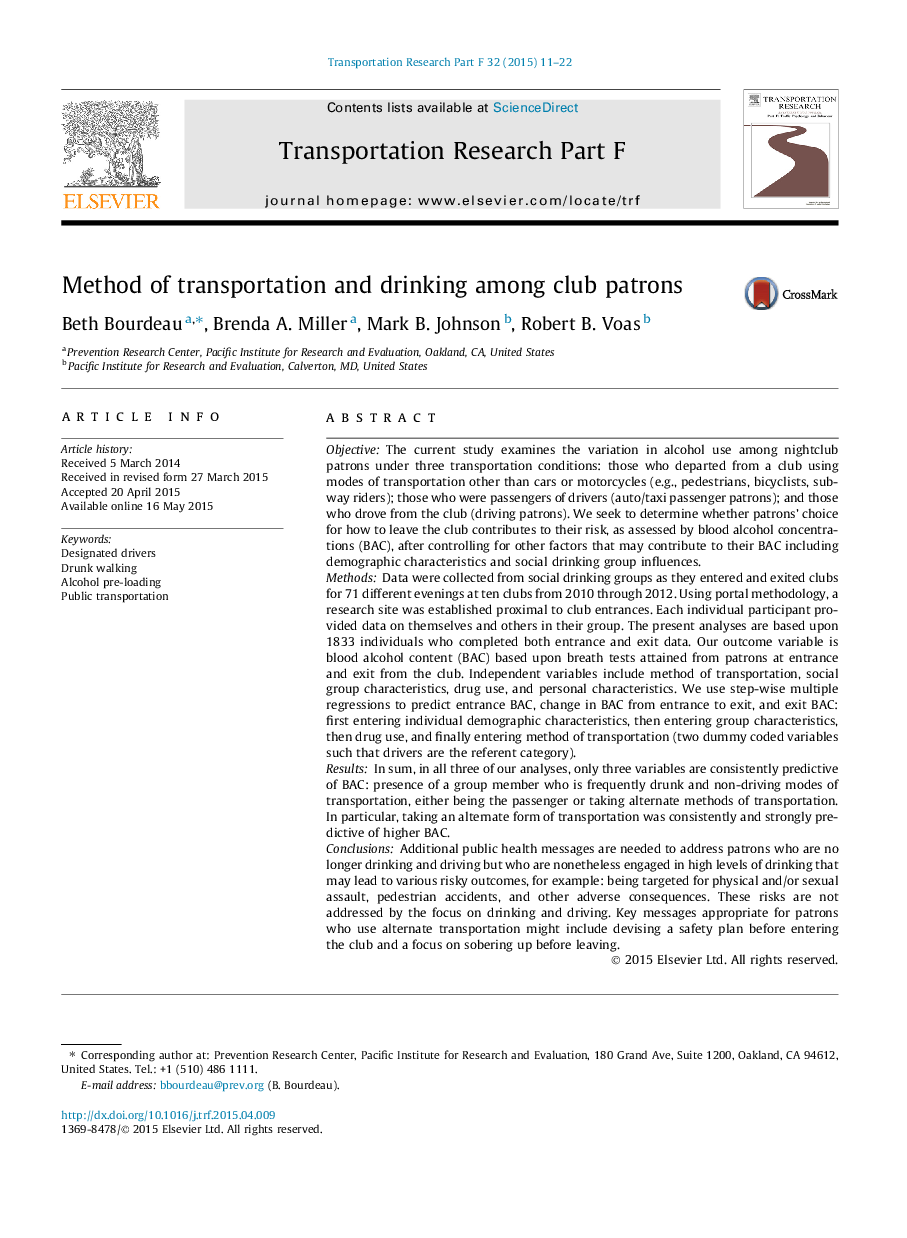| کد مقاله | کد نشریه | سال انتشار | مقاله انگلیسی | نسخه تمام متن |
|---|---|---|---|---|
| 897646 | 1472451 | 2015 | 12 صفحه PDF | دانلود رایگان |
• Significant differences in BAC between patrons taking different methods transportation.
• Transportation methods were consistently the strongest predictors of BAC.
• Having a frequently drunk member in the social drinking group was a strong predictor.
• All significant predictors are factors that may be amenable to intervention.
ObjectiveThe current study examines the variation in alcohol use among nightclub patrons under three transportation conditions: those who departed from a club using modes of transportation other than cars or motorcycles (e.g., pedestrians, bicyclists, subway riders); those who were passengers of drivers (auto/taxi passenger patrons); and those who drove from the club (driving patrons). We seek to determine whether patrons’ choice for how to leave the club contributes to their risk, as assessed by blood alcohol concentrations (BAC), after controlling for other factors that may contribute to their BAC including demographic characteristics and social drinking group influences.MethodsData were collected from social drinking groups as they entered and exited clubs for 71 different evenings at ten clubs from 2010 through 2012. Using portal methodology, a research site was established proximal to club entrances. Each individual participant provided data on themselves and others in their group. The present analyses are based upon 1833 individuals who completed both entrance and exit data. Our outcome variable is blood alcohol content (BAC) based upon breath tests attained from patrons at entrance and exit from the club. Independent variables include method of transportation, social group characteristics, drug use, and personal characteristics. We use step-wise multiple regressions to predict entrance BAC, change in BAC from entrance to exit, and exit BAC: first entering individual demographic characteristics, then entering group characteristics, then drug use, and finally entering method of transportation (two dummy coded variables such that drivers are the referent category).ResultsIn sum, in all three of our analyses, only three variables are consistently predictive of BAC: presence of a group member who is frequently drunk and non-driving modes of transportation, either being the passenger or taking alternate methods of transportation. In particular, taking an alternate form of transportation was consistently and strongly predictive of higher BAC.ConclusionsAdditional public health messages are needed to address patrons who are no longer drinking and driving but who are nonetheless engaged in high levels of drinking that may lead to various risky outcomes, for example: being targeted for physical and/or sexual assault, pedestrian accidents, and other adverse consequences. These risks are not addressed by the focus on drinking and driving. Key messages appropriate for patrons who use alternate transportation might include devising a safety plan before entering the club and a focus on sobering up before leaving.
Journal: Transportation Research Part F: Traffic Psychology and Behaviour - Volume 32, July 2015, Pages 11–22
